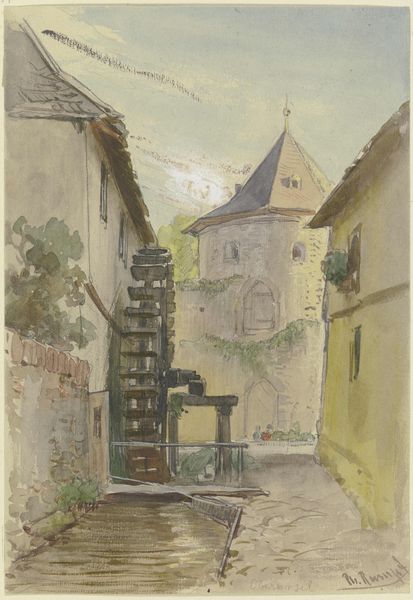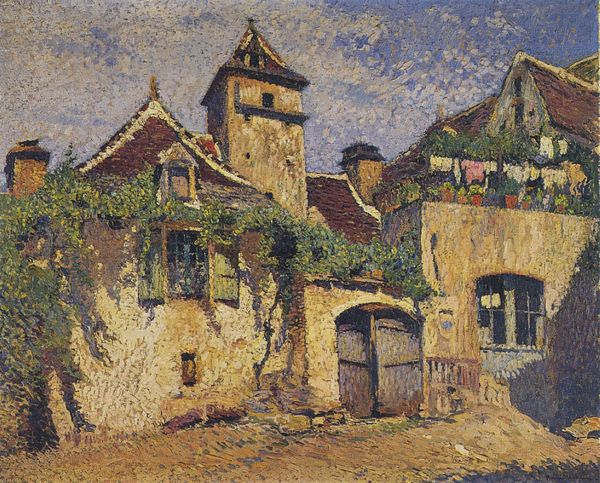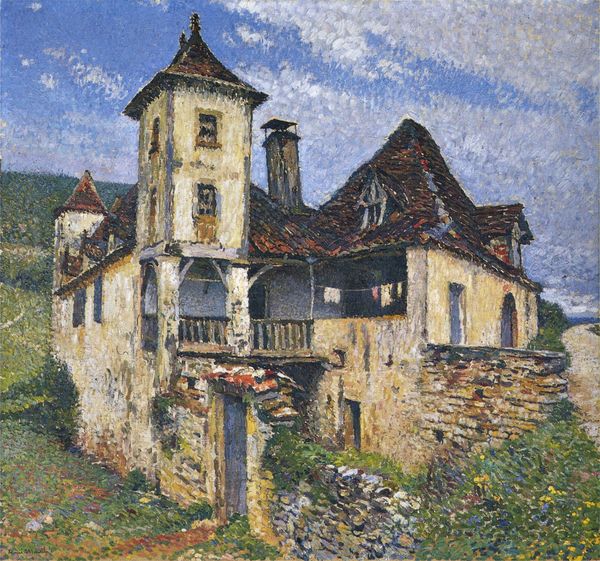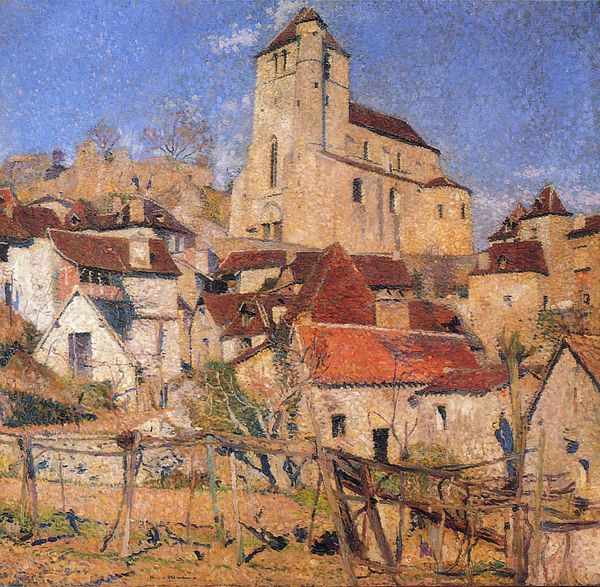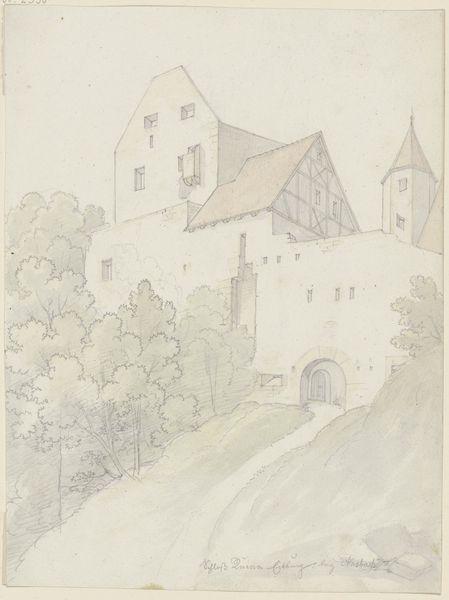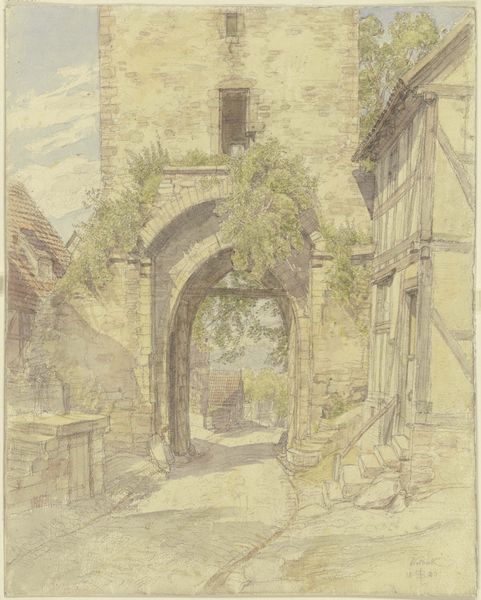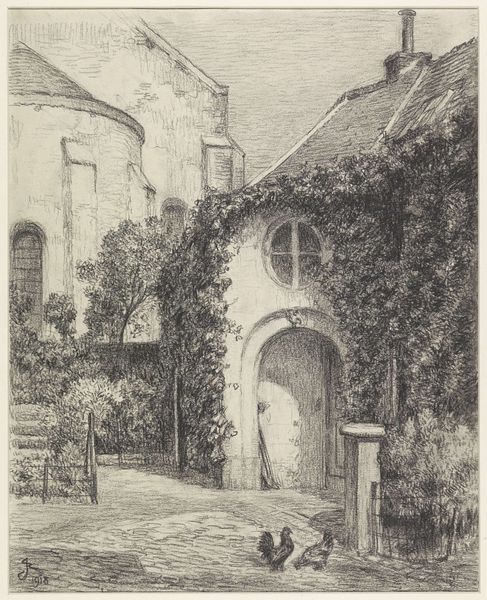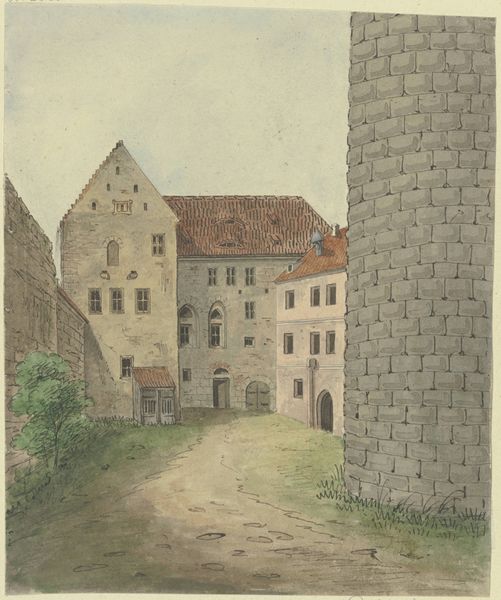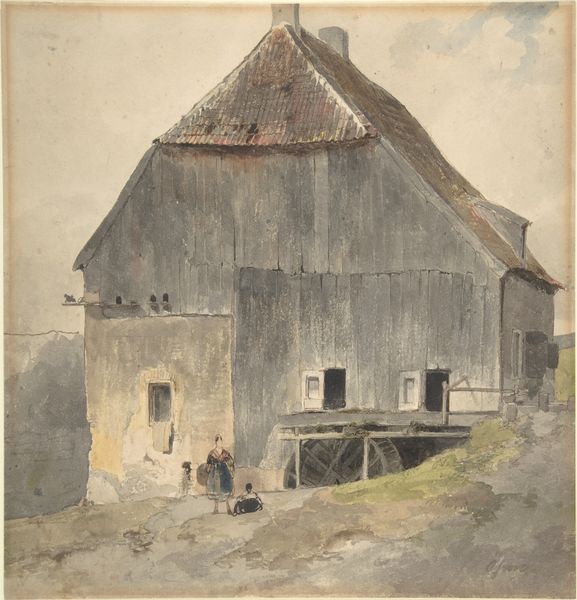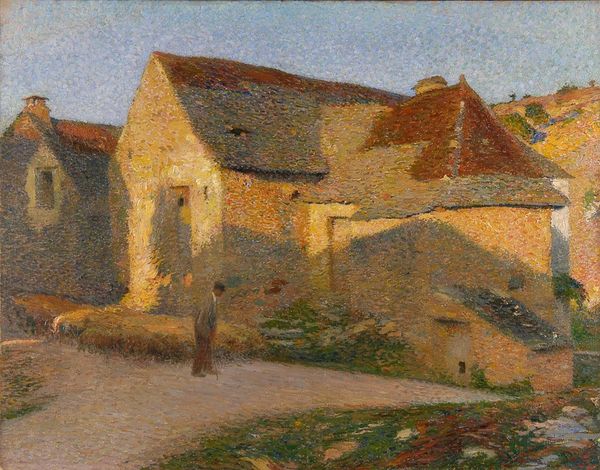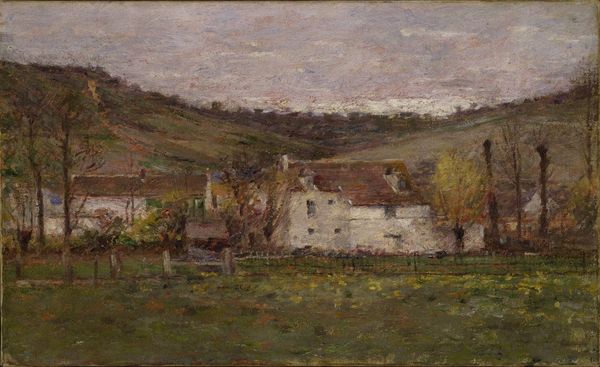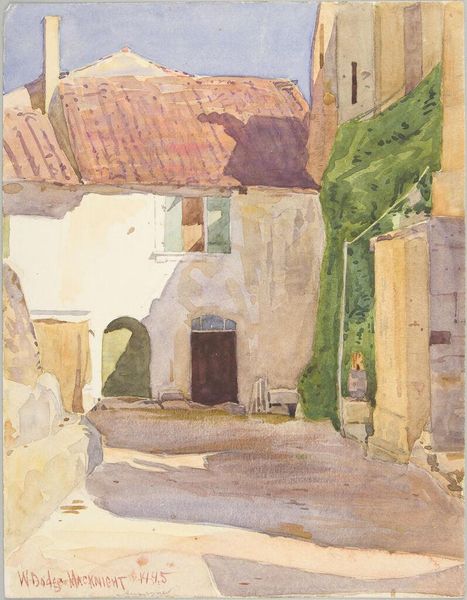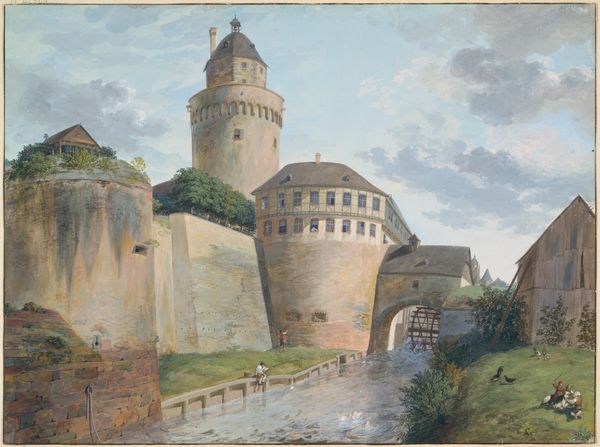
drawing, painting, oil-paint, architecture
#
drawing
#
painting
#
oil-paint
#
landscape
#
oil painting
#
architecture
#
realism
Copyright: Public Domain
Curator: Before us is "Tower of a City Wall," an intriguing oil painting attributed to Fritz Hauck, currently held at the Städel Museum. There isn't a confirmed date. Editor: The structure depicted feels imposing, but the subdued palette creates a rather tranquil atmosphere. The texture gives the stone surfaces a very tactile quality. Curator: It brings up interesting questions of architectural authority. The tower, often symbolic of power and control, here appears almost…weathered, vulnerable. This could serve as commentary on institutional power and the shifting socio-political landscapes. Considering the architectural details and likely period of its construction, we need to explore what it tells us about social class, mobility, and restriction within city life. Editor: And don't forget the very tangible construction! Think about the sourcing of materials—the specific type of stone, how it was quarried, transported. The arrangement of the materials suggests a hierarchy of labor; stone masonry often signified generations of specialized knowledge. The very weight of those stones conveys the power dynamics at play. The structure wasn't just drawn; it was built! Curator: That material reality deeply impacted people's lives. Consider how these structures also operated as dividing lines. What did it mean to live inside those walls versus outside? And what communities were intentionally excluded or marginalized in the process of urban development? Editor: Exactly! The very mortar holding it together is indicative of the economic conditions that allowed for the wall’s erection, while the decay of those materials over time reflects on shifting social and material fortunes. What were people consuming, trading and creating here? Curator: Considering Hauck was creating during a period of enormous upheaval and change in Germany, this artwork begs for an interpretation framed by anxieties about tradition, security, and perhaps a yearning for a time when these physical markers of authority were seemingly unwavering. It makes us ask, What anxieties were the materials and methods used to erect city defenses and civic buildings designed to either enforce or put to rest? Editor: This certainly complicates any romanticized view of historical architecture. I'm left considering the immense amount of unseen labor involved in creating just this small section of the tower, how such building programs transformed both landscapes and local communities through resource extraction, material flows and urban expansion. Curator: It offers a way to think more critically about who benefited and who was burdened by this type of built environment, prompting us to challenge simple aesthetic readings and consider the wall's long legacy and lasting relevance. Editor: Right. It's a striking reminder that things never appear out of thin air; they emerge through tangible human effort, materials, and with both intended and unforeseen repercussions.
Comments
No comments
Be the first to comment and join the conversation on the ultimate creative platform.
